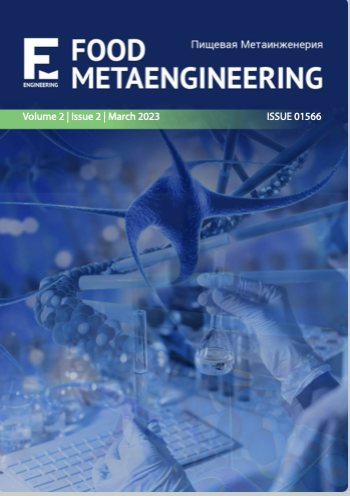
Scientific peer-reviewed journal
The peer-reviewed scientific journal "FOOD METAENGINEERING" is registered with the Federal Service for Supervision of Communications, Information Technology, and Mass Media on March 13, 2023 (Certificate of Registration Эл No. ФС77-84878 - online publication).
It is published four times a year.
Distribution - Russian Federation, foreign countries.
The electronic version of the journal with multimedia applications is available at fme-journal.org.
The "FOOD METAENGINEERING" journal is a scientific publication that reflects the results of cutting-edge research in the field of food science, food expert organization, and food safety provision.
The journal publishes original empirical and review articles in the field of food science, short communications, and pilot studies at the intersection of technical, biological, and agricultural sciences, including:
- Agricultural and other food raw materials: quality and safety monitoring systems.
- Methodology and modeling approaches for evaluating the composition and quality of raw materials and their processed products.
- Technological principles and techniques for the production and processing of raw materials, considering physical, chemical, and microbiological mechanisms of transformation during the production of food products, bioactive substances, and food additives, as well as other industrial products.
- Processing technologies of agricultural and other raw materials into food products, bioactive substances, food additives, and other industrial products of general and special purposes, including genomic, post-genomic, proteomic, digital, additive, DNA technologies, etc.
- Food physics, chemistry, and microbiology.
- Personalized nutrition: scientific foundations, technologies, and devices.
- Environmental aspects of food raw material production and processing.
- Processes and equipment for the production and processing of food raw materials.
- Principles of food waste processing (food products with completely or partially lost initial consumer properties during their production, processing, utilization, or storage).
The editorial board aims to promote an interdisciplinary approach to research.


















